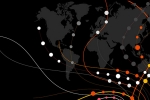
Diversity and Inclusion

We understand diversity beyond its usual definition, as it represents our ability to respect and value individual differences. Our diversity is our identity and a source of strength at the heart of our strategy, and you can see its reflection in everything we do.
As in previous years, PwC remains determined to build a more gender equal world and remains focused on actions with a gender impact across all cultural, generational and ethnical backgrounds. We keep a global agenda that relates closely to three of the Sustainable Development Goals, specifically: Gender Equality (5), Decent Work and Economic Growth (8) and Reduced Inequalities (10) that resonate in the actions we take.

For this fiscal year, we decided to implement a new approach in the way we analyse the Diversity & Inclusion of our firm. You see, you can’t manage something you do not know or fully understand, and we were working with the general result of different indicators without translating it into data, seeing the precedents behind it or projecting where that could lead us. We wanted to not just advocate, but to take a step further and create a deeper sense of accountability.
That is why we started to systematically apply a Data Driven approach to all our actions. It helps us spot where we need to work on and where we are on the right track to make a sustainable change. We provide our leadership team and the Line of Service leaders with concrete statistics and predictive analytics not only to create awareness in what’s happening, but to inspire behaviors and actions regarding the recruitment, retention and promotion strategies.
While navigating further into our D&I journey, we are pursuing our analysis of our core data with more granularity, multiplicity of criteria and frequency. Our goal remains to develop greater awareness and understanding and to debunk the unconscious biases hidden into our policies, procedures and behaviours.
An approach through data
Predictive analytics
As part of our data driven approach, we participated in a forecast analysis made by PwC Global, the goal of which was to extrapolate our workforce three years into the future. Our results showed that we will not experience a severe deterioration over the coming 3 years (only 1%). However, we will certainly miss our greatest opportunity to significantly jump ahead of the wave! We are very conscious that there are no short term fixes and that any deviation in the present could annihilate years of efforts, that is why we are combining three actions to counterbalance this situation: lowering female outflow, equalising promotion rates and increasing female inflow; which, according to the analysis, could increase the female population by nothing less than 10%. On top of that, we’ll continue to monitor these topics frequently and adjust accordingly the results we observe.

Dive into our promotion cycle
This year, we focused on the way we promote our people and we shifted our approach by computing the percentage of promotions in relation to the pool of eligible women and similarly for men. In a nutshell, we quantified the opportunity to be promoted for both a woman and a man at PwC for all responsibility levels by applying the following formula: (Number of women promoted / Total of eligible women) and also for men.
Our promotion cycle is gender equal until Manager level and shows a deviation in favour of more promotion opportunities “unintentionally” granted to men as from Senior Manager. It is a reminder of what was once called the glass ceiling with an opportunity gap of 14% for our Senior Managers. Fortunately, it shrinks to a gap of 5 to 6% for the upper levels of the hierarchy. This gives us a baseline to monitor our talent pipeline for the future and ensure we have not built a funnel at the entrance to our top management.

Gender pay gap
With a gender pay gap of 5.5% in favor of men, Luxembourg is one of the most advanced countries in Europe in terms of pay equity. But calculating a gender pay gap can be tricky depending on what you consider should be included as explanatory criteria. Historically most business positions have been allocated to men, and even if women are slowly reaching the top for a more balanced gender mix, there are many variables that can influence this journey.
As in 2018, we asked for an independent assessment using the Logib software (recommended by the Ministry of Equality between Women and Men) to perform a gender pay gap analysis. This methodology includes five more variables besides gender, such as academic background, age, experience, seniority, position and responsibility level. While the general numbers improved, there’s still room for improvement.
We still note a total pay gap of 8.2% in favour of men, where only 0.3% is due to gender. This indicates that we are closing the gender pay gap compared to the 0.7% computed in 2018 using the same tool and methodology. We may conclude we did it: whatever the gender, same job, same salary. So, what makes the total pay gap in favor of men if not correlated to gender? The analysis indicates that a wage gap comes from factual differences such as more men in the positions with higher job requirements and qualifications, among others. This shows us that we need to keep on challenging our internal processes and ensure that we manage with an acute gender lens our pipeline of talents. This gap analysis gives us the opportunity to revisit our mechanism of professional ascension to address the numerical imbalance of women in leadership positions.
This is the reason why we went deeper into our promotion cycles with robust and systematic gender analytics. Our approach through data will help us tackle internal challenges while unrolling our strategy for the coming years, when we expect to see a positive impact in the figures. The goal is to unleash the potential of both men and women to the top and walk to a more equitable future.
This material makes reference to WEF expanded metrics - People - Dignity and Equality - Pay Gap
Celebrating diversity
We also care about our internal and external footprint that contributes to our societal impact. It is the reason for the numerous and sizable events we organise during the year. They give an occasion to conduct dialogue while learning and exchanging with all the actors of the Luxembourgish market.
Some initiatives from this year with a first time feeling are:
- International Women’s and our first Men’s Day: In our goal to achieve gender empathy, this year we celebrated both Women’s and Men’s Days. We hosted our first International Men’s Day with a conversation entitled “What about men?”. The occasion to celebrate the value men bring into the world, but also to recognise their own challenges about topics such as prescriptive social norms, mental health and the stereotypes that rule the concept of masculinity nowadays. We also hosted a homemade exhibition with 15 remarkable women in the innovation and creativity fields to profile them as active drivers of change in our lives since long ago.
- Our first LGTB+ conference: Along with the IMS, we organised a panel that revolved around why organisations should include diversity at the workplace more strategically, what they gain from it and how to make it happen for the LGBT+ community in the professional environment. We counted with over 60 participants from several institutions to also attend the official presentation of the Luxembourg Professional LGBT+ Allies Association.


Uniting efforts
Since 2018, PwC Luxembourg joined "My Pledge", an initiative that advocates for gender balance among speakers at public events, bringing attention to the presence of female panelists in them. We monitor all of our internal and external events on a bimonthly basis and calculate the gender ratio, we also congratulate the teams that reached or exceeded a 50-50 balance on our internal website. This year, we had a total of 103 events and the participation of 501 panellists. The gender ratio of this year was 31% of women speakers against 69% of men, a small increase from last year (30%) but a steady evolution in the right direction.
Something that is worth mentioning is the participation of female speakers during the COVID-19 lockdown. Between March and May, we organised 32 (virtual) events with a total of 156 panelists. The gender ratio for these months was 63% of men (98 participants) and 37% of women (58 participants). Our best numbers so far. It is interesting to see this dynamic playing out, it shows the potential of how going virtual can contribute to a greater presence of female contributors.
PwC is a founding member of the International Dual Career Network (IDCN) along with other companies from the country. IDCN aims to facilitate the integration of life partners of international employees into the local labour market through events, conferences and workshops. Despite the pandemic, we supported the core team with communications for their newsletter and we could see the network growing with the joining of 2 additional corporate members.
If you want to know more about our Diversity & Inclusion, visit our new dedicated page and discover our first Diversity movie made in Luxembourg.









